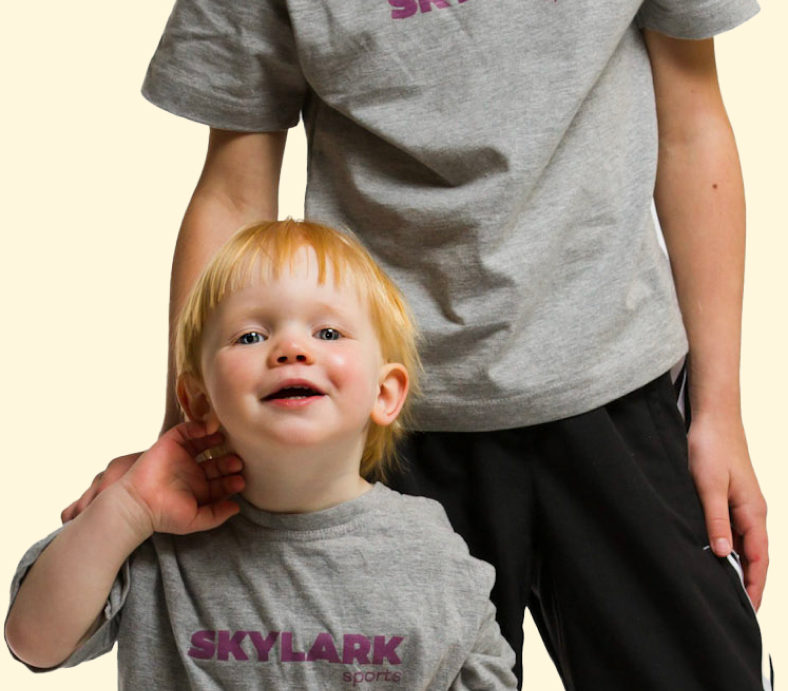Reading time: 9min 35 sec
I know all the parents out there will agree on one thing when I ask them: what they want to fix about kids' habits nowadays. And that's getting them away from those screens! It's tough, I get it.
It's no secret that children spend more time glued to their devices in today's digital age than ever. And while technology certainly has its benefits, it's necessary to make sure our kids get the physical activity they need to thrive.
As a gymnastics trainer, I've seen the power of physical activity in keeping kids engaged, active, and away from those pesky screens.
That's why I've compiled this list of the ten best gymnastic routines for your kids that we do in our gymnastic classes. These routines keep them active and healthy, fostering essential skills like balance, coordination, and strength. They're a gateway to a healthier, more active lifestyle for your little ones.
Whether your child is a budding gymnast or simply looking for a fun way to stay fit, these routines are bound to keep them on their toes – quite literally!
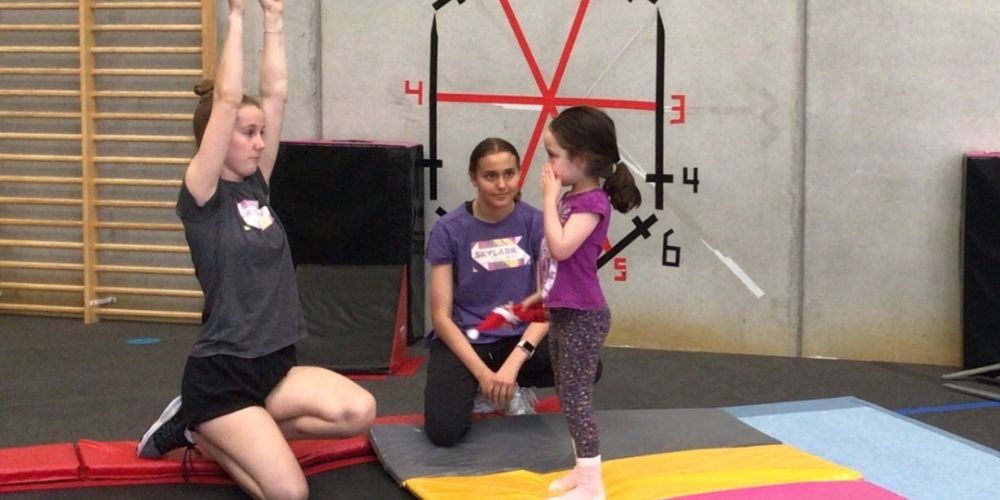
Why Should You Worry About Your Kid's Screen Time?
As a parent, being concerned about your child's screen time is natural. According to an Australian Institute of Family Studies article,
" Most Australian children spend more time on screens than is recommended. Estimates from primary research suggest only 17–23% of preschoolers and 15% of 5–12-year-olds meet screen-time guidelines. Screen time has also increased between 10 and 14, especially among boys. The increased screen-time types were electronic gaming for boys and TV, computer use and social networking for girls."
Excessive screen time has clear negative impacts on our children, and I understand that every parent can see these effects.
Some of these that I would personally witness at home are:
- Physical Health: Excessive screen time often leads to a sedentary lifestyle, contributing to obesity and other health issues.
- Mental Health: Studies have shown a link between increased screen time and issues like depression, anxiety, and poor sleep quality in children.
- Social Skills: Spending too much time on screens can hinder the development of crucial social skills, such as communication and empathy, as face-to-face interaction decreases.
- Academic Performance: Excessive screen time can interfere with homework completion and concentration, potentially impacting academic performance.
- Risk of Addiction: Screen time, particularly on devices with internet access, can lead to addictive behaviours, making it difficult for children to self-regulate their usage.
- Content Concerns: Not all content on screens is appropriate for children. Unsupervised access can expose them to violent, inappropriate, or misleading material.
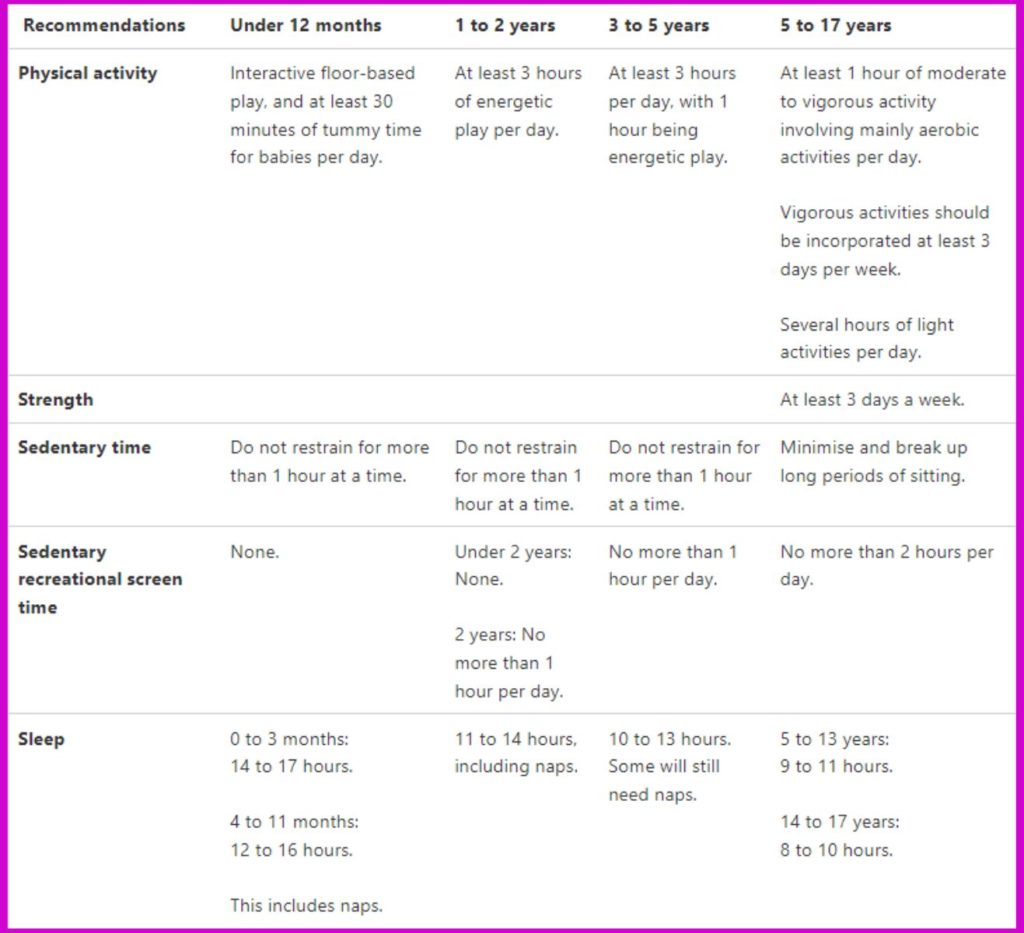
Physical Activity and Movement Guidelines
Have you heard of the 24-hour movement?
It's nice to know that the Australian government recognizes the importance of physical activity, sleep, and sedentary behaviour through the 24-hour movement guidelines. These guidelines emphasize the need for children and adolescents to balance physical activity, sedentary behaviour (such as screen time), and sleep for optimal health and well-being.
In fact, according to these guidelines, children aged 5 to 12 years should accumulate at least 60 minutes of moderate to vigorous physical activity every day while minimizing sedentary activities like screen time. Additionally, they should aim for 9 to 11 hours of uninterrupted sleep per night.
For adolescents aged 12 to 18, the guidelines recommend aiming for at least 60 minutes of moderate to vigorous physical activity daily, limiting sedentary behaviour, and aiming for 8 to 10 hours of sleep per night.
By following these guidelines and encouraging a healthy balance of physical activity, screen time, and sleep, we can support our children in leading active, healthy lifestyles.
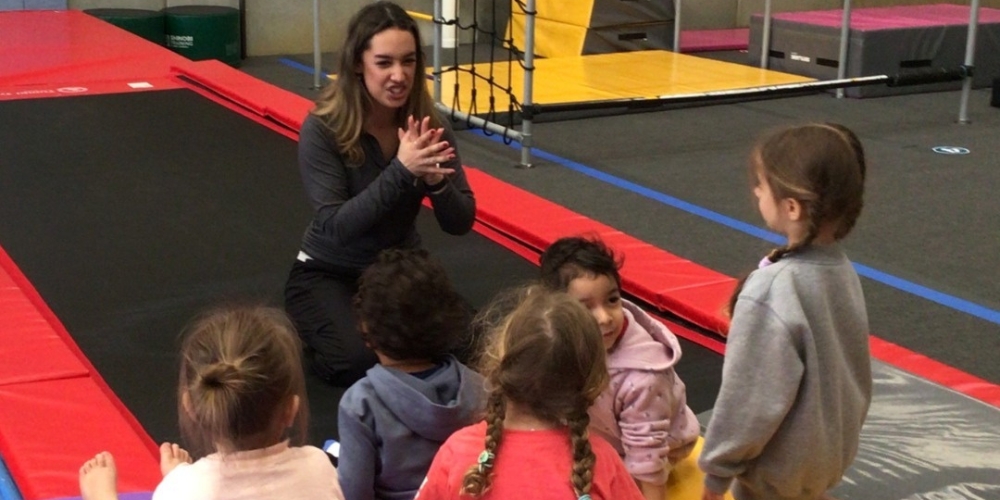
Benefits of Gymnastics to Your Kids
As a gymnastics instructor, I've witnessed countless benefits that gymnastics can bring to kids beyond just physical fitness. Here are seven key advantages:
Physical Fitness
Gymnastics isn't just about getting sweaty; it's about building a strong, resilient body from head to toe. I've watched kids transform their strength, flexibility, and stamina through gymnastics. From the little ones learning to hold a proper cartwheel to the older kids mastering complex routines, every achievement is a testament to their growing physical prowess. And the best part? They're having so much fun they don't even realize they're working out!
Confidence Boost
There's nothing quite like when a timid kid conquers their fears and shines on the gymnastics floor. I'll never forget the first time one of my students nailed a backflip after weeks of practice. The look of pure joy and pride on their face was priceless. Gymnastics has a magical way of boosting kids' self-esteem as they tackle new challenges and push their limits. Whether mastering a new skill or performing in front of a crowd, every accomplishment builds their confidence brick by brick.
Social Skills
Gymnastics classes aren't just about somersaults and handstands but also bustling hubs of friendship and camaraderie. I've seen kids form tight-knit bonds as they support and encourage each other through every twist and turn. Whether they're spotting each other during practice or cheering from the sidelines at competitions, gymnastics fosters a sense of community that extends far beyond the gym floor. Seeing these friendships blossom and grow with each passing class warms my heart.
Focus and Discipline
Let's be real: gymnastics isn't for the faint of heart. It takes serious dedication and discipline to master those gravity-defying flips and twists. I've watched kids dig deep and push through fatigue and frustration to achieve their goals. Whether practising for hours on end or fine-tuning their technique with laser focus, gymnastics teaches them the importance of grit and determination. And when they finally nail that tricky routine? The sense of accomplishment is truly priceless.
Balance and Coordination
Have you ever seen a gymnast effortlessly glide across the balance beam or stick a landing with pinpoint precision? Gymnastics isn't just about brute strength but finesse and control. I've seen kids develop incredible balance and coordination as they master the art of gymnastics. And the best part? These skills translate seamlessly to other sports and activities, giving them a competitive edge wherever they go.
Goal Setting
From their first class, gymnastics teaches kids the importance of setting and working hard to achieve goals. I've seen kids light up with excitement as they inch closer to mastering a new skill or conquering a daunting routine. Whether aiming for a spot on the competition team or simply striving to improve their form, gymnastics gives them the tools to chase their dreams with confidence and determination.
Life Skills
Beyond the flips and tricks, gymnastics instills valuable life lessons beyond the gym floor. Kids learn resilience in the face of failure, perseverance in pursuing their goals, and time management as they juggle school, practice, and other commitments. These skills aren't just important for gymnastics; they're essential for success in all areas of life. As a gymnastics instructor, there's nothing more rewarding than watching my students grow into strong, confident individuals ready to take on the world, one cartwheel at a time.
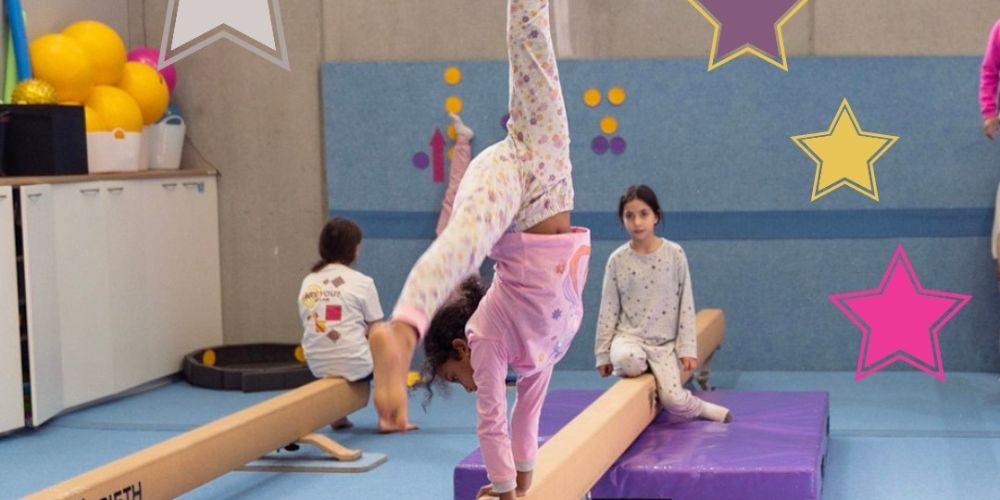
10 Best Gymnastic Routines for Kids
1. Warm-Up Routine
Okay, picture this: before we dive into all the cool flips and twists, we've got to get those muscles warmed up! It's like revving up a car before hitting the road. A good warm-up pumps blood loosens those stiff muscles and helps prevent nasty injuries. Plus, it gets the kids excited and ready to rock!
2. Forward Rolls
Who doesn't love rolling around like a human wheel? Forward rolls are not just fun – they're also super important for building coordination and body awareness. Plus, they're like a safety blanket for kids. If they ever take a tumble, they'll know how to roll out of it safely. It's all about learning to fall gracefully!
3. Cartwheel Progressions
Cartwheels are like the bread and butter of gymnastics. They're all about grace, strength, and a lot of style. By breaking them down into steps, we're helping kids master the basics before they start adding their flair. It's all about building confidence, one step at a time!
4. Balance Beam Basics
Oh, the balance beam – every gymnast's best friend and worst nightmare! But seriously, walking on a narrow beam requires some serious focus and control. It's like walking a tightrope but way cooler. Plus, it's a great confidence booster once they conquer their fear of heights!
5. Bar Swings
Swingin' from the bars like a monkey is every kid's dream. But it's not just fun and games – it's also building serious upper-body strength and coordination. Plus, there's something so satisfying about nailing that perfect rhythm and flying through the air like a superhero!
6. Floor Routine
Now, this is where the real magic happens – the floor routine! It's like putting together a jumps, flips, and dance moves puzzle. Not only does it showcase their athleticism, but it also lets them express themselves and show off their personality. It's their time to shine!
7. Vault Basics
Vaulting is all about power and precision. It's like launching yourself into the air and sticking the landing like a pro. But it's also about learning to trust your body and commit to the moment. Plus, who doesn't love the feeling of flying through the air?
8. Handstand Progressions
Ah, the handstand – the ultimate test of strength and balance. It's like defying gravity and standing on your hands like it's no big deal. But it's also about building confidence and overcoming fear. Once they master the handstand, they'll feel like they can conquer anything!
9. Trampoline Fun
Bouncing around on a trampoline is every kid's dream come true! But it's not just fun – it's also building some serious coordination and body awareness. Plus, it's a great way to burn off some energy and get those endorphins flowing!
10. Cool Down Stretch
And finally, we wrap it all up with a nice, relaxing cool-down stretch. It's like giving your muscles a big ol' hug after a hard day's work. Stretching helps prevent soreness or stiffness and keeps those muscles nice and limber. Plus, it's the perfect way to wind down and relax after a fun-filled gymnastics session!
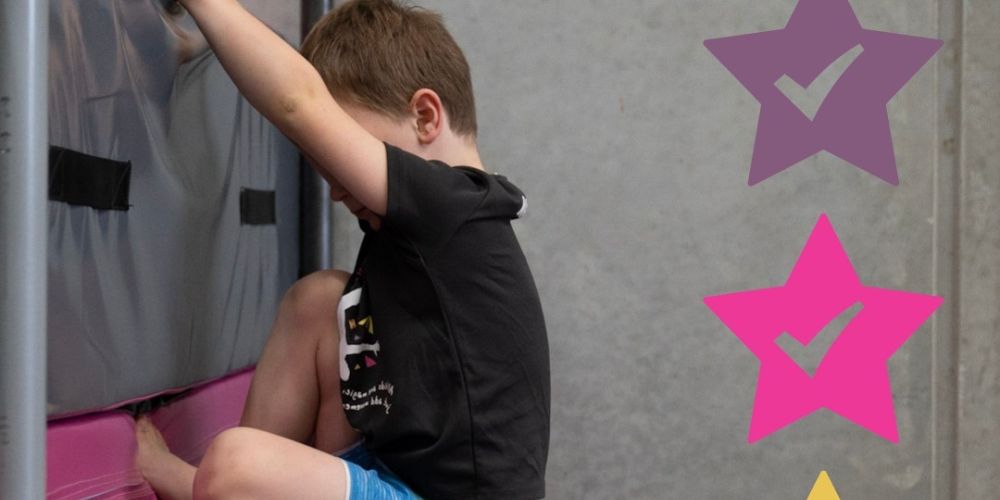
How to Incorporate Gymnastic Routines into Daily Activities
Morning Stretch
Start the day with a few gymnastics-inspired stretches. At home, we would start with reaching for the sky with arms, touching their toes to stretch their hamstrings and doing gentle twists to loosen up their spines. This helps wake up their muscles and prepares them for the day ahead.
Active Breaks
Throughout the day, incorporate short bursts of gymnastics exercises as active breaks. Set a timer for every hour or so, and have kids do quick exercises like forward rolls, cartwheels, or jumping jacks to get their blood flowing and break up long periods of sitting.
After-School Gymnastics Hour
Designate a specific time each day for "after-school gymnastics hour." During this time, kids can practice different gymnastic routines or skills they've learned, independently or with siblings. Make it a fun and interactive activity by playing upbeat music and setting up a makeshift gymnastics area in the living room or backyard.
Gymnastics Choreography
Turn everyday chores into gymnastics-inspired activities. For example, have kids practice balance and coordination by walking across a "balance beam" made from a strip of masking tape on the floor while carrying a laundry basket. Or challenge them to do cartwheels or handstands while cleaning up their room. This is my favourite routine! Who would not want a helping hand while having fun, right?
Gymnastics Games
Create games that incorporate gymnastics elements. For example, set up a scavenger hunt where kids must perform specific gymnastics skills at each location before moving on to the next clue. Or play "Simon Says" with gymnastics moves like jumps, rolls, and poses.
Family Fitness Night
Dedicate one evening a week to family fitness night, focusing on gymnastics. Clear some space in the living room or basement and take turns leading each other through different gymnastics routines or exercises. It's fun to bond as a family while staying active and healthy.
Bedtime Relaxation
Wind down at the end of the day with some calming gymnastics-inspired stretches. Encourage kids to do gentle stretches like butterfly stretches for their hips, cat-cow stretches for their spine, and child's pose for relaxation. This helps release tension from the day and prepares their bodies for a restful night's sleep.
Frequently Asked Questions
Can gymnastics help improve my child's academic performance?
While gymnastics primarily focuses on physical development, it can indirectly benefit academic performance by promoting discipline, focus, and time management skills. Regular physical activity has also improved cognitive function and academic achievement.
Can children with disabilities participate in gymnastics?
Many gymnastics programs offer inclusive classes or adaptations for children with disabilities. These programs promote participation, skill development, and confidence in a supportive and accommodating environment. Contact local gymnastics facilities or organizations specializing in adaptive sports for more information.
How can I encourage my child to stay motivated and committed to gymnastics?
Encourage your child to set personal goals, celebrate achievements, and maintain a positive attitude towards challenges and setbacks. Provide support and encouragement and allow them to take ownership of their gymnastics journey and pursue their passions within the sport.
How can I help my child overcome fear or anxiety related to certain gymnastics skills?
It's common for children to experience fear or anxiety when learning new gymnastics skills. Encourage open communication with your child to understand their concerns and provide reassurance and support. Break down the skill into smaller, manageable steps and gradually build their confidence through repetition and positive reinforcement. Consider seeking guidance from a qualified gymnastics coach or sports psychologist if needed.
Conclusion
Alright, we've covered a lot of ground discussing how to weave gymnastics into your child's daily life. From backyard adventures to family challenges and everything in between, there's no shortage of ways to keep those little ones flipping, twisting, and tumbling away from screens. Remember, it's not just about mastering skills; it's about fostering a love for movement, creativity, and healthy living.
So, whether you're setting up an obstacle course in the living room or transforming your backyard into a gymnastics arena, have fun, stay safe, and let those kiddos shine like the little gymnastic stars they are! Here's to many more days filled with laughter, learning, and boundless energy. Keep those bodies moving, and you might discover the next Olympic champion right in your home!

